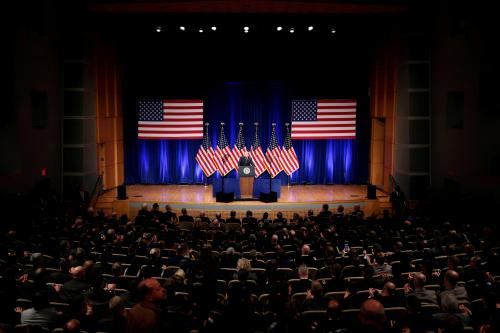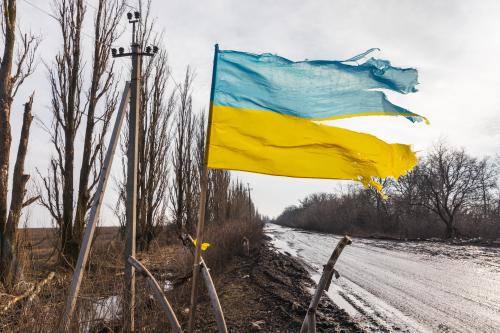Mr. Chairman and members of the Committee, it is an
honor to appear here before you today to discuss what lessons we might learn from the way the U.S. conducted diplomacy before the Kosovo War. I would also like to
take this opportunity to commend the Committee for taking a look at the Kosovo War and the lessons that have been and can be learned—this is a worthwhile enterprise, particularly since many in and outside government appear
to be learning some wrong lessons.
Let me start with my bottom-line conclusion. Although NATO did, in the end, succeed in creating a secure environment for ethnic Albanians inside Kosovo by forcing Serb security forces out and deploying 50,000 troops inside the territory, a different strategy prior to the war might have achieved this result at less cost. In particular, if Milosevic’s regime was the fundamental cause of the conflict and if Kosovo’s independence was strategically undesirable as the U.S. and its allies rightly argued since the conflict started early last year, then the only logical solution to the conflict was one imposed by force. That required a willingness to use ground forces—more rather than less and with American troops playing a significant part. Absent a willingness to deploy and, if necessary, use ground forces, the current outcome is probably the best we could have achieved.
NATO’s Success
It is important to begin any assessment of U.S. policy toward Kosovo by acknowledging that, in the end, it turned out well—to a degree that many, including myself, doubted would ever occur with the means that had been chosen to achieve it. For the average Kosovar, life today is better and the future more promising than at any time since Belgrade stripped Kosovo’s autonomy away a decade ago. Clear evidence for this can be found in the fact that within one month of NATO forces entering Kosovo, 750,000 refugees had returned to the territory. Today, all Kosovar Albanians who wanted to return have come home. That is a remarkable testament to the success of U.S. and NATO policy. It stands in marked contrast to the fears all of us had just a very few months ago—fears of permanent exile for nearly a million people, of starvation and death through exposure to a brutal winter for many hundreds of thousands, and of many tens of thousands of victims of rape and murder.
Of course, daily life in Kosovo is not yet normal. As expected, there has been a large exodus of Serbs, and in the chaos and confusion that accompanied the end of the war some 200 Serbs and Albanians have been killed. Though tragic, it is important to put these developments in perspective. The killings after the war occurred at a rate that is still well below the murder rate in many U.S. cities. And while many Serbs left precipitously in fear of returning Albanians, this should not be compared to the systematic and forced expulsion of the Albanian population prior to and during the war. All in all, it is impossible to escape the conclusion that developments inside Kosovo after the war are powerful evidence of NATO’s achievement.
Nevertheless, this accomplishment came with a significant price-tag. According to best estimates, 10,000 Albanians were systematically killed by Serb forces. Tragedy befell nearly every ethnic Albanian inside Kosovo—some were killed, more were wounded, raped, and mutilated, and almost all were hounded from their homes and their country. It is not surprising that in today’s Kosovo, hatred and revenge still run deep and that the territory is increasingly monoethnic in its makeup.
A Different Policy?
This raises an important question: When violence started in March 1998 would a different policy have avoided this high price? I believe the answer is “yes,” although I hasten to add that we will of course never know.
From the outset of the Kosovo conflict, the Clinton Administration based its policy on three assumptions.
- First, developments in Kosovo were of important interest to the United States and its European allies not only because of a general and commendable concern with human and minority rights in this part of the world but also because a violent flare-up there could prove unsettling for the Bosnian peace achieved in Dayton and stability within southeast Europe as a whole.
- Second, at the heart of the conflict were Milosevic’s nationalistic policies and only pressure on Belgrade would succeed in effecting a solution to the conflict.
- Third, the preferred solution to the conflict involved increased self-government for the Kosovar Albanians that would fall short of the territory’s independence, let alone its partition.
Of these three assumptions, I fully accept the validity of the first—on both moral and strategic grounds, developments in Kosovo were and remain of interest to the United States. However, the second and third assumptions were (and still are) contradictory, the more so as pressure moved from diplomacy and considerations of economic sanctions to considering the threat and actual use of force. Since the solution sought by the administration and its European allies was closer to Milosevic’s position than to that of the Kosovars, pressure on Belgrade was unlikely to end in an agreement acceptable to both sides. Indeed, the more we pressed Milosevic, the less likely the Albanians were to accept anything less than independence.
U.S. Policy Options
From the outset of the conflict, there were three basic options: we could have acquiesced in what Milosevic was doing, supported Kosovo’s independence and assisted the KLA, or we could have imposed a solution in order to prevent both the inevitable violence caused by the first option and the destabilizing outcome of the second.
Over time, the Clinton Administration and its allies in Europe reluctantly came to accept that only the third of these options was acceptable. That, indeed, was what Rambouillet was supposed to be about. Yet, not only did we come to this conclusion very late—ten months into the conflict and only after nearly half a million people had been forced from their homes—but we were never really prepared to do what was necessary to impose a solution. That meant putting troops on the ground in Kosovo. And given the security environment inside Kosovo, it would have required more rather than less troops and a significant American presence, if not actually a U.S. lead. In the end, the Clinton Administration came to accept the need for some troops only last February. Even then the administration ruled out their deployment in anything but a permissive environment right through the end of the war.
Administration officials contend that there were three reasons for their reluctance to deploy ground forces in Kosovo. First, there was no support in Congress or the country for deploying yet more troops to the Balkans. To the extent that judgment was correct, Congress bears a significant part of the responsibility. While I recognize that the administration never made its case, I wonder whether the reception up here would have been any different if it had.
Second, the prospect of ground forces would have created major fissures within the NATO alliance and posed particular problems for key allies like Germany and Italy, both of which were facing a transition in government. In contrast, Britain had concluded as far back as August 1998 that ground forces were needed in Kosovo. But American hesitation was hardly the way to garner an allied consensus, however difficult that task would have been.
Third, Russia had opposed the use of force under any circumstances and would have gone completely off the reservation if U.S. and NATO troops entered Yugoslavia without Belgrade’s consent. Indeed, the administration had worked assiduously to keep Moscow on board, and a ground force decision would inevitably have led to further strains in the relationship. But as subsequent events were to show, what was Russia going to do? In the end, Moscow had no option but to work hard to convince Milosevic to accept NATO’s basic terms.
Lessons
If there is a lesson to be learned from this history, it is this: once you decide to engage in a conflict, you cannot do so half-heartedly. You need clear objectives, a clear and achievable strategy to meet these objectives, and the determination to succeed. Prior to the war, U.S. and allied policies were characterized by muddled objectives in favoring neither independence nor the maintenance of the status quo for Kosovo; by a contradictory strategy that consisted of inconsequential sticks that were insufficient to persuade Belgrade but sufficient to give the Kosovars hope for eventual success; and by a hope that the least bad option would succeed rather than a determination that the worst would not occur.
In late April, incoherence and muddling through were discarded in favor of a clear strategy designed for victory. The bombing intensified, inflicting real damage on key levers of Milosevic’s power, diplomacy accelerated to close off any thought Milosevic might have that there was still a diplomatic escape, and NATO planning for a ground invasion was stepped up to make sure Milosevic had no hope of escaping military defeat. That, finally, led to success—for the United States, for NATO, for stability in the region, and, above all, for the average Kosovar who could now return home in safety.
The Brookings Institution is committed to quality, independence, and impact.
We are supported by a diverse array of funders. In line with our values and policies, each Brookings publication represents the sole views of its author(s).



Commentary
TestimonyU.S. Diplomacy before the Kosovo War
September 28, 1999